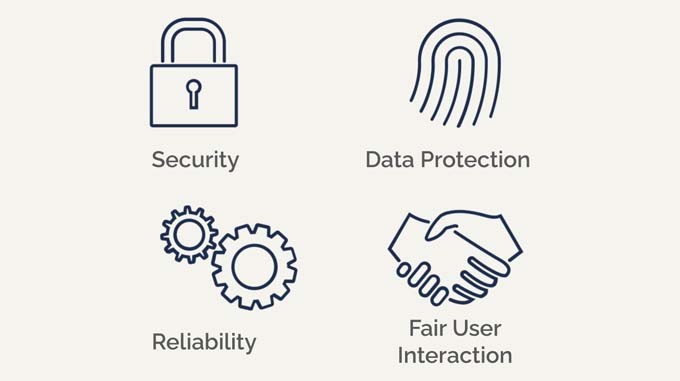10 tips for a successful business continuity plan
Companies around the world are exposed to numerous threats. This is also shown by international studies. A study by Arcserve shows that 76 percent of all companies have already suffered a serious data loss. In this context, 83 percent described a downtime of 12 hours or less as acceptable. This may sound reasonable, but it is not realistic.

According to a study by Arcserve, only 52% of affected companies were able to recover from their data loss within 12 hours or less. Although 95 percent of companies stated that they had a disaster recovery plan, only just under a quarter of them described it as mature, robust, well documented and up-to-date. So where to start? The best place to start is with a detailed checklist for a business continuity plan.
Business Continuity Checklist:
- Put together a planning team
Assemble key personnel from the various business units and ensure that the management supports your business continuity project. This team should ensure that a comprehensive plan is created that covers all critical business areas and systems.
- Carry out a technology inventory
Carry out an audit of all IT assets, for example with a tool from the Top 10 list from Enterprise Talk. This provides an overview of hardware, software, cloud services, external service providers and other resources that are essential for the operation of a company. This overview enables you to carry out effective risk management and appropriate disaster recovery planning.
- Set up a business impact analysis
First, prioritize the critical business processes and data - taking compliance requirements into account, of course. Evaluate the potential consequences of a business outage or data loss for your processes. The aim is to understand which business areas need to be restored immediately in order to minimize the negative consequences. A priority list for the recovery of business functions, processes and data is helpful for this.
- Draft business continuity plan
First, define the scope of the plan, including identifying critical business functions, data and resources, and documenting roles and responsibilities. Then, develop appropriate disaster recovery strategies to create a blueprint that will help you successfully manage your business despite a disruption.
- Designing employee training courses
It is advisable to develop a training program and carry out regular exercises. The focus should be on the timely detection of malicious emails and the reporting process for suspicious activities. However, employees should also be informed about crisis management, emergency procedures and responsibilities so that they can act as the first line of defense to the outside world if the worst comes to the worst.
- Securing business-critical information
To protect sensitive information from cyber threats and physical damage, the implementation of security measures such as Intercept X Advanced from Sophoshelpful. In addition, sensitive data should be encrypted and security protocols should be regularly updated and created.
- Implement a backup strategy
Set up regular backup schedules that are aligned with your RTOs and RPOs and follow the 3-2-1-1 backup strategy. This is the only way to minimize downtime and data loss and to restore data and systems quickly after a disruption.
- Provision of failover and redundancy solutions
Having redundant systems, especially for critical functions and data, is essential. Take advantage of the high availability of modern cloud services, especially those that can perform a failover with a single mouse click. Such a service enables business operations to be maintained, even in the event that a primary system is damaged or fails.
- Creation of a communication plan
Develop communication guidelines for internal and external stakeholders and designate an official spokesperson. Preparing crisis communication templates is also helpful to minimize confusion in this critical situation and maintain trust and communication.
- Test and update frequently
Regular testing is the only way to ensure that a plan works. You should constantly adapt the plan to changing circumstances and take these changes into account in the business processes and technologies. Only in this way can you be sure that the business continuity plan will continue to evolve and work even in a changing risk landscape.
By following these steps, companies can have a business continuity plan in place to best respond to potential disruptions. In this way, the costs of data loss and business disruption can be avoided and a company's reputation protected.
About the author: Sven Richter is Marketing Manager DACH at Arcserve, www.arcserve.com.









